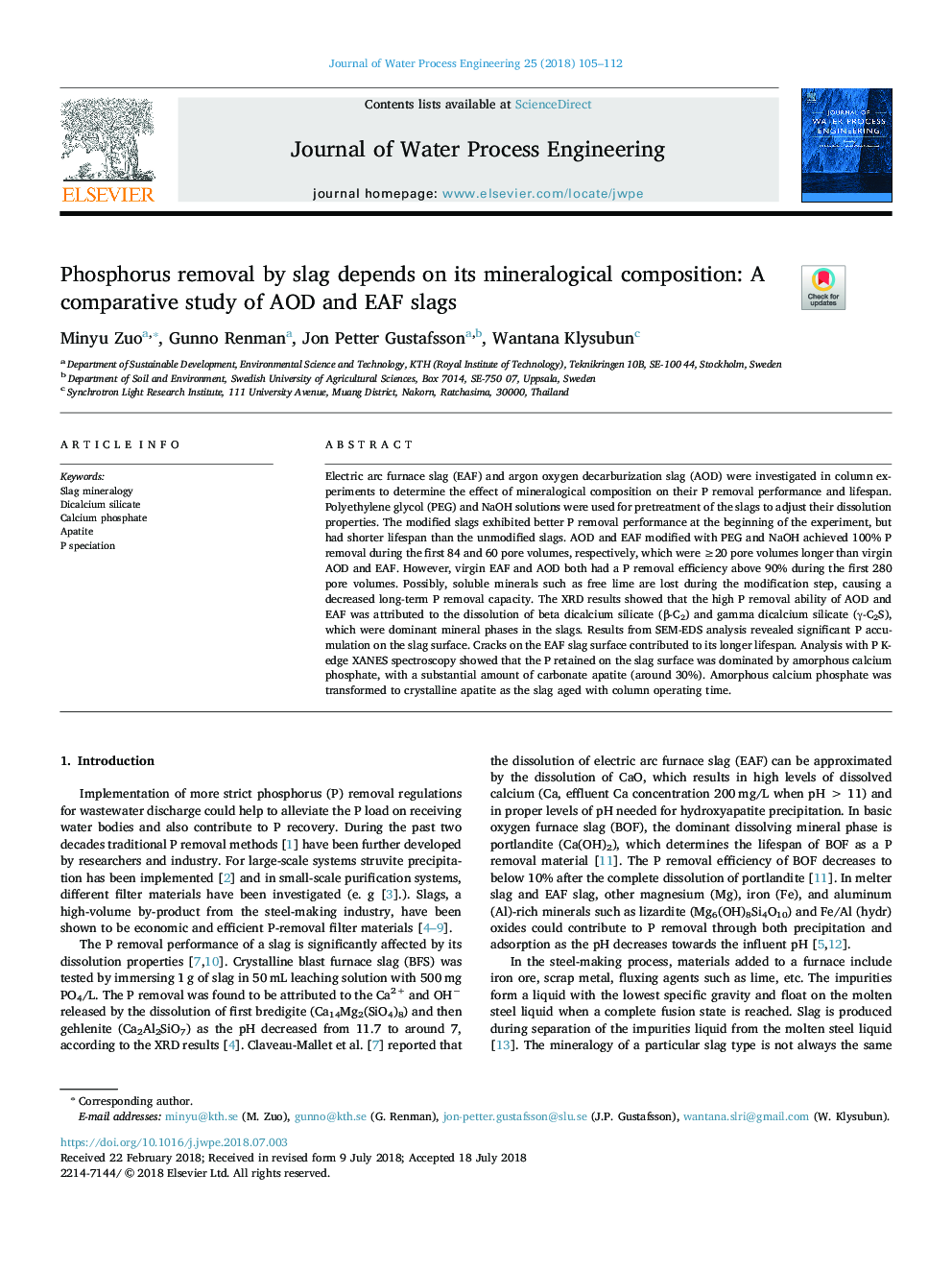| Article ID | Journal | Published Year | Pages | File Type |
|---|---|---|---|---|
| 6671835 | Journal of Water Process Engineering | 2018 | 8 Pages |
Abstract
Electric arc furnace slag (EAF) and argon oxygen decarburization slag (AOD) were investigated in column experiments to determine the effect of mineralogical composition on their P removal performance and lifespan. Polyethylene glycol (PEG) and NaOH solutions were used for pretreatment of the slags to adjust their dissolution properties. The modified slags exhibited better P removal performance at the beginning of the experiment, but had shorter lifespan than the unmodified slags. AOD and EAF modified with PEG and NaOH achieved 100% P removal during the first 84 and 60 pore volumes, respectively, which were â¥20 pore volumes longer than virgin AOD and EAF. However, virgin EAF and AOD both had a P removal efficiency above 90% during the first 280 pore volumes. Possibly, soluble minerals such as free lime are lost during the modification step, causing a decreased long-term P removal capacity. The XRD results showed that the high P removal ability of AOD and EAF was attributed to the dissolution of beta dicalcium silicate (β-C2) and gamma dicalcium silicate (γ-C2S), which were dominant mineral phases in the slags. Results from SEM-EDS analysis revealed significant P accumulation on the slag surface. Cracks on the EAF slag surface contributed to its longer lifespan. Analysis with P K-edge XANES spectroscopy showed that the P retained on the slag surface was dominated by amorphous calcium phosphate, with a substantial amount of carbonate apatite (around 30%). Amorphous calcium phosphate was transformed to crystalline apatite as the slag aged with column operating time.
Related Topics
Physical Sciences and Engineering
Chemical Engineering
Chemical Engineering (General)
Authors
Minyu Zuo, Gunno Renman, Jon Petter Gustafsson, Wantana Klysubun,
